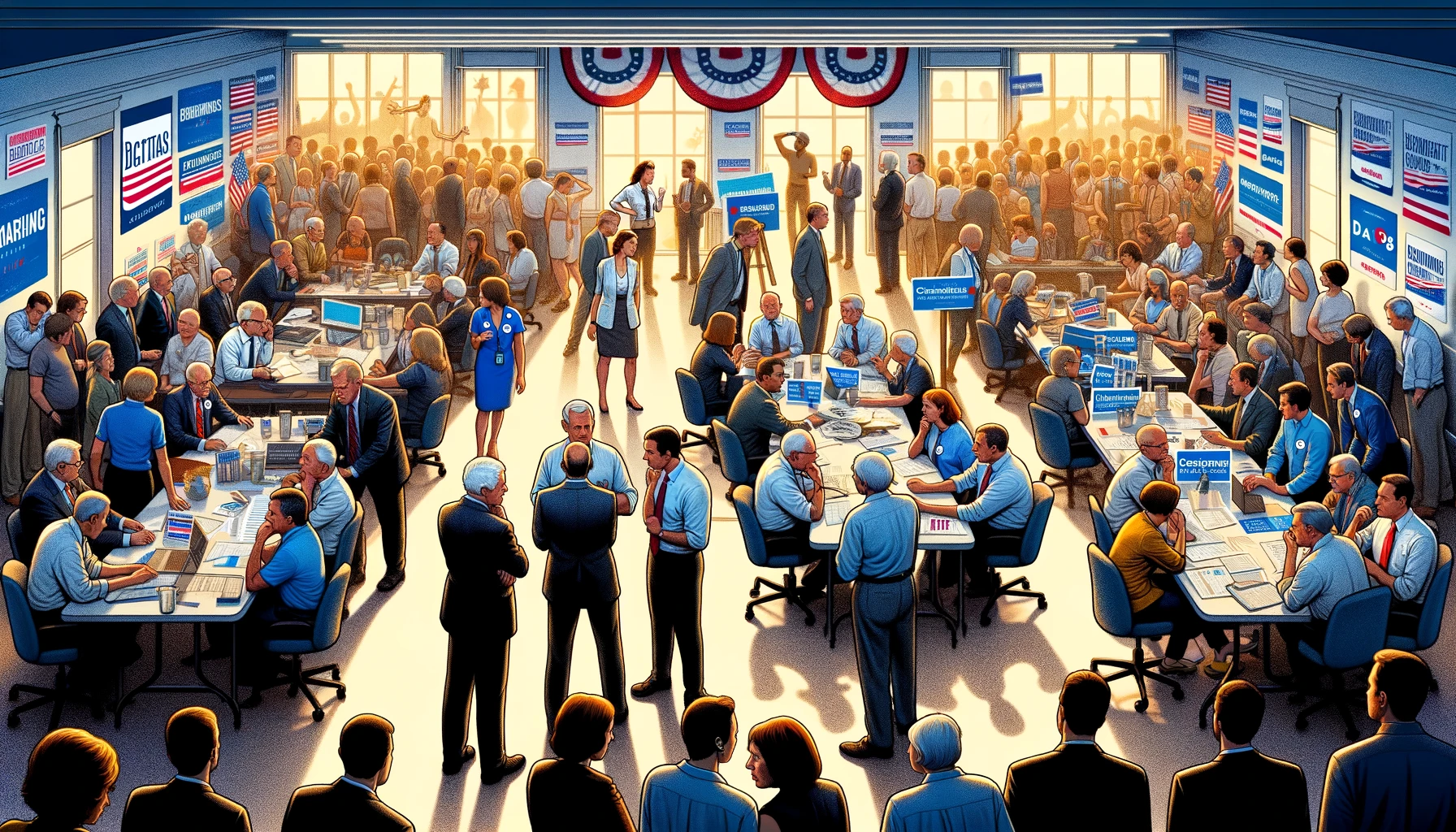Democrats are facing a big question about who should be their top candidate for president. Some people are worried about President Joe Biden’s age and memory, especially after a report from special counsel Robert Hur. This report said some critical things about Biden’s abilities, making people wonder if he’s the right person to lead the Democratic Party in the upcoming election. This has led to discussions about having a backup plan, called “Plan B,” in case Biden can’t continue.
Here’s what could happen:
If Biden decides he can’t continue or if something happens to him, the Democrats would need to quickly find someone else to be their candidate. But it’s not easy to just replace him because of rules and politics. Right now, Biden is winning in the race to become the Democratic nominee, so it’s hard for anyone else to catch up. Also, most states have already set their deadlines for candidates to enter the race, so it’s too late for new people to join.
The only real option for a backup plan is if Biden himself decides to step down. This would happen after the primary elections finish in June, where Biden is expected to win by a lot. Then, Biden could say he won’t accept the nomination and let someone else take his place.
If this happens, there would be a rush among other Democrats to become the new nominee. They would try to convince delegates (people who vote for the nominee) to support them instead of Biden. This would lead to a lot of excitement and uncertainty at the Democratic convention in August.
But what if Biden stays in the race until the convention in August, but then something happens that makes him unable to continue? In that case, the party leaders would have to decide on a new nominee, and it could get messy because time would be short before the election.
This situation also shows that the Republican Party has similar issues with their candidate, Donald Trump. Both parties are dealing with questions about their candidates’ age and abilities, but there aren’t clear solutions because of the rules and how the parties work.
Overall, it’s a complex situation that shows how important it is to have plans in place for unexpected events, especially in politics.
This article is based on this article:
Democrats Might Need a Plan B. Here’s What It Looks Like. – POLITICO

Background information
This article is about a hypothetical situation where the current president of the United States, Joe Biden, decides to step down from his position and let someone else run for the election in November 2024. The article explains why this might happen, how it would affect the Democratic Party, and what the rules and procedures are for choosing a new nominee. Learning the following information may help the reader understand this article better.
- Joe Biden is the 46th president of the United States. He was elected in 2020, defeating the former president Donald Trump. He is 81 years old, which makes him the oldest president in history. He has been a politician for a long time, serving as a senator and a vice president before becoming president.
- Robert Hur is a lawyer who was appointed by Trump to investigate Biden and his son Hunter for their involvement in Ukraine. He released a report in February 2024 that accused Biden of having a poor memory and diminished faculties, but did not find any evidence of criminal wrongdoing. This report damaged Biden’s reputation and raised doubts about his ability to lead the country.
- The Democratic Party is one of the two major political parties in the United States. It is generally more liberal and progressive than the other party, the Republican Party. The Democratic Party supports policies such as universal health care, environmental protection, civil rights, and social justice. The Democratic Party’s symbol is a donkey, and its color is blue.
- The Republican Party is the other major political party in the United States. It is generally more conservative and traditional than the Democratic Party. The Republican Party supports policies such as lower taxes, free markets, national security, and individual freedom. The Republican Party’s symbol is an elephant, and its color is red.
- The presidential election is the process of choosing the leader of the United States. It happens every four years, on the first Tuesday after the first Monday in November. The candidates for president are usually chosen by their parties through a series of primary elections and caucuses, where voters express their preferences. The candidates then compete in the general election, where they try to win the most votes in each state. The winner of each state gets a certain number of electoral votes, based on the population of the state. The candidate who gets at least 270 electoral votes out of 538 becomes the president.
- The convention is a meeting of delegates from each state who formally nominate the candidates for president and vice president. The convention also adopts the party’s platform, which is a document that outlines the party’s goals and policies. The convention usually takes place in the summer before the general election, in a different city each time. The convention is a big event that attracts a lot of media attention and showcases the party’s leaders and supporters.
- The nominee is the candidate who is officially chosen by the party to run for president. The nominee usually picks a running mate, who is the candidate for vice president. The nominee and the running mate form a ticket, which is the pair of candidates that voters can choose in the general election. The nominee usually tries to appeal to a wide range of voters, including those who supported other candidates in the primaries. The nominee also tries to contrast themselves with the nominee of the other party, and highlight their strengths and qualifications.
Please subscribe to Insight Fortnight, our biweekly newsletter!
